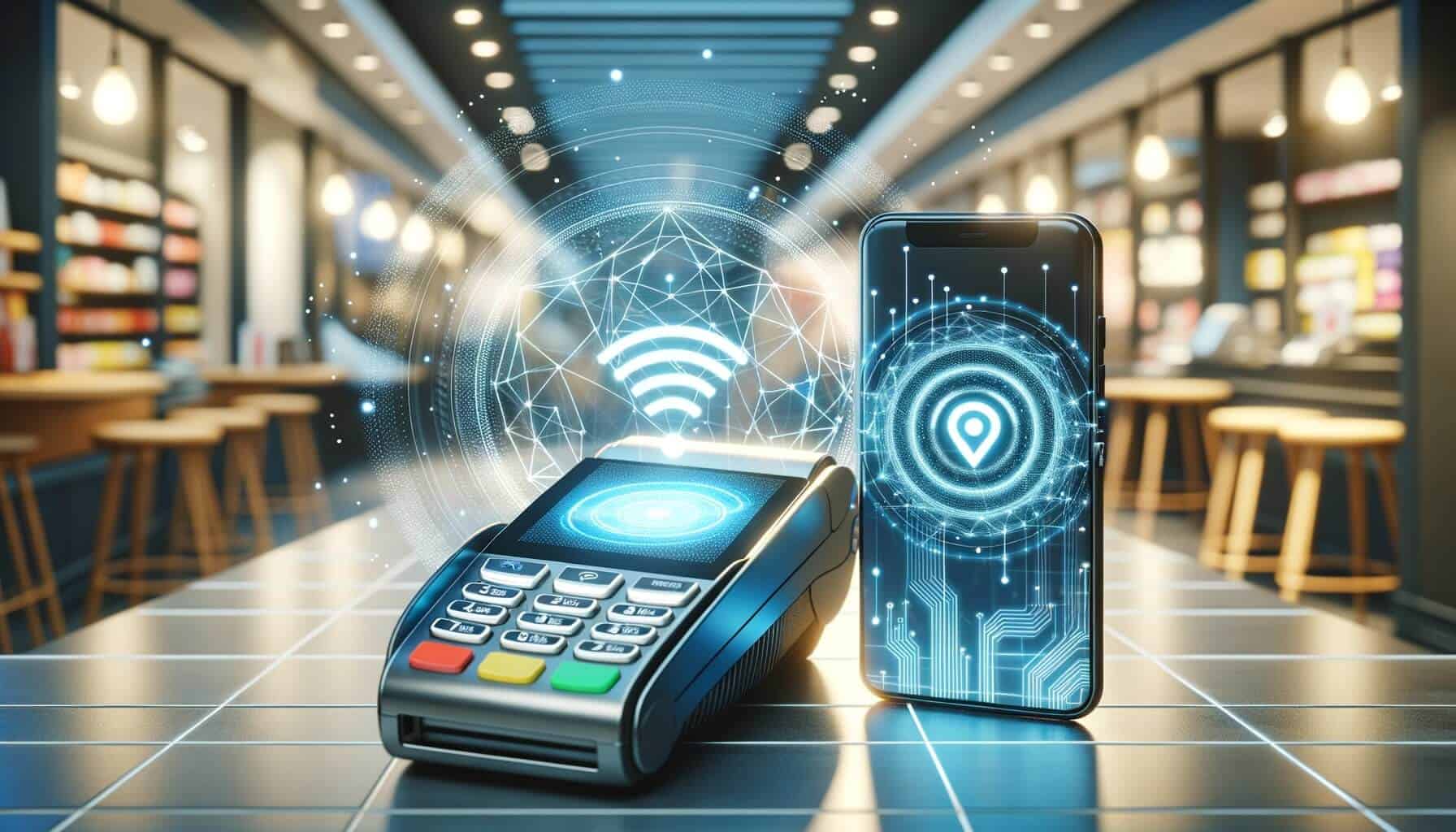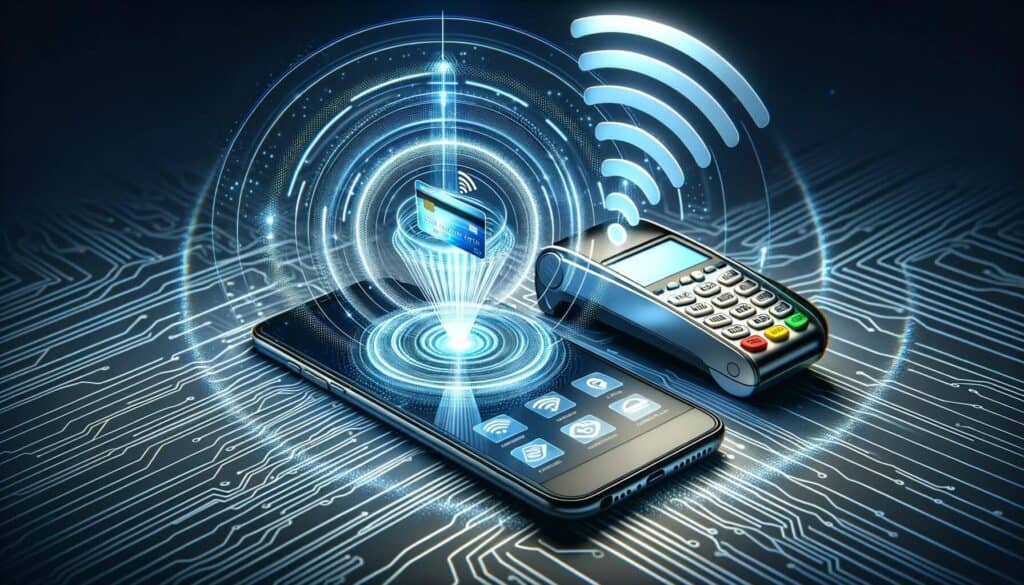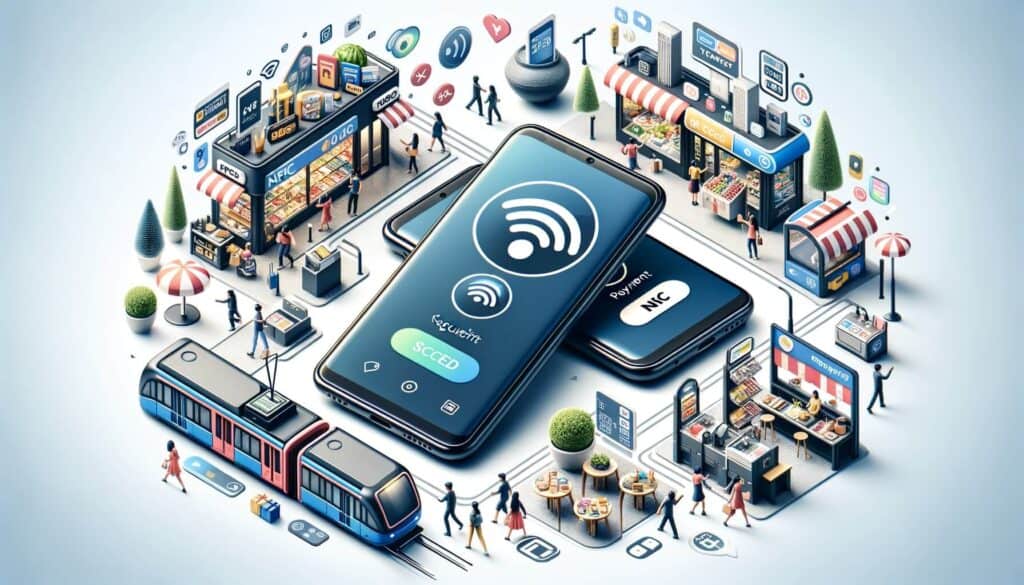
By Mollie Mills January 27, 2025
In today’s digital age, mobile payments have become increasingly popular as a convenient and secure way to make transactions. One such method is NFC mobile payments, which utilize Near Field Communication (NFC) technology to enable contactless payments using smartphones or other compatible devices.
This article will provide a comprehensive guide to understanding NFC mobile payments, how they work, their benefits and advantages, setting them up on your device, popular NFC mobile payment apps and platforms, security measures and concerns, a comparison with other payment methods, and answers to frequently asked questions.
Understanding NFC Technology
NFC technology is a short-range wireless communication technology that allows devices to exchange data when they are in close proximity to each other, typically within a few centimeters. It operates on the principle of electromagnetic induction, where an NFC-enabled device generates a radio frequency field that can power a passive NFC tag or initiate communication with another NFC device.
NFC technology has various applications beyond mobile payments, including contactless ticketing, access control, data transfer, and more. It is widely used in transportation systems, retail stores, and even smart homes. The technology is built into many modern smartphones, tablets, and wearable devices, making it readily available for consumers to utilize NFC mobile payments.
How NFC Mobile Payments Work

NFC mobile payments work by leveraging the NFC technology in smartphones or other compatible devices to establish a secure connection between the device and a payment terminal. The process typically involves the following steps:
1. Device Initialization: To use NFC mobile payments, users need to ensure that their device is NFC-enabled and has a compatible mobile payment app installed. They may also need to link their payment app to a bank account or credit card.
2. Payment Terminal Interaction: When making a payment, the user’s device is brought close to an NFC-enabled payment terminal. The terminal generates a radio frequency field that powers the NFC chip in the device, establishing a connection.
3. Data Exchange: Once the connection is established, the payment terminal and the device exchange encrypted data, including payment information such as the transaction amount and the user’s account details.
4. Authorization and Verification: The payment terminal sends the encrypted data to the payment processor or the user’s bank for authorization. The bank verifies the transaction and checks for available funds or credit limit.
5. Transaction Confirmation: Upon successful authorization, the payment terminal and the device exchange confirmation messages, indicating that the payment has been processed. The user may receive a notification on their device or a printed receipt from the terminal.
Benefits and Advantages of NFC Mobile Payments

NFC mobile payments offer several benefits and advantages over traditional payment methods. These include:
1. Convenience: NFC mobile payments eliminate the need to carry physical cash or cards, allowing users to make payments quickly and easily with just their smartphones or other compatible devices. It simplifies the payment process, especially for small transactions.
2. Speed: NFC mobile payments are incredibly fast, often taking just a few seconds to complete a transaction. Users can simply tap their devices on the payment terminal, eliminating the need to swipe cards or enter PINs.
3. Security: NFC mobile payments incorporate multiple layers of security to protect users’ payment information. The encrypted data exchange between the device and the payment terminal ensures that sensitive information is not exposed. Additionally, many devices require biometric authentication, such as fingerprint or facial recognition, to authorize payments.
4. Contactless and Hygienic: NFC mobile payments have gained significant popularity during the COVID-19 pandemic due to their contactless nature. Users can make payments without physically touching the payment terminal, reducing the risk of spreading germs.
5. Loyalty Programs and Offers: Many NFC mobile payment apps and platforms integrate loyalty programs and offers, allowing users to earn rewards or receive discounts when making payments. This incentivizes users to adopt NFC mobile payments and enhances their overall shopping experience.
Setting Up NFC Mobile Payments on Your Device

Setting up NFC mobile payments on your device is a straightforward process. Here’s a step-by-step guide to help you get started:
1. Check Device Compatibility: Ensure that your device supports NFC technology and has the necessary hardware and software capabilities to enable NFC mobile payments. Most modern smartphones, tablets, and wearable devices are NFC-enabled.
2. Install a Mobile Payment App: Download and install a compatible mobile payment app from your device’s app store. Popular options include Apple Pay, Google Pay, Samsung Pay, and others. These apps may come pre-installed on some devices.
3. Link Payment Method: Open the mobile payment app and follow the on-screen instructions to link your preferred payment method, such as a credit card, debit card, or bank account. You may need to provide additional verification or authentication, depending on the app and your location.
4. Set Up Security Features: Configure the security features of the mobile payment app, such as enabling biometric authentication (fingerprint or facial recognition) or setting up a PIN code. These measures enhance the security of your NFC mobile payments.
5. Add Loyalty Cards and Offers: Some mobile payment apps allow you to add loyalty cards or take advantage of special offers. Explore the app’s settings or options to add your loyalty cards or link your accounts to receive personalized offers.
6. Test and Use: Once you have completed the setup process, you can test your NFC mobile payments by making a small transaction at a compatible payment terminal. Simply bring your device close to the terminal and follow the prompts on your screen.
Popular NFC Mobile Payment Apps and Platforms

Several NFC mobile payment apps and platforms have gained popularity worldwide. Let’s explore some of the most widely used options:
1. Apple Pay: Apple Pay is a mobile payment app exclusive to Apple devices, including iPhones, iPads, and Apple Watches. It allows users to make NFC mobile payments at contactless payment terminals using their linked credit or debit cards. Apple Pay also supports in-app and online purchases.
2. Google Pay: Google Pay is available on Android devices and offers similar functionality to Apple Pay. Users can add their payment cards to the app and make NFC mobile payments at compatible terminals. Google Pay also supports peer-to-peer payments and in-app purchases.
3. Samsung Pay: Samsung Pay is designed for Samsung devices, including smartphones and smartwatches. It supports NFC mobile payments, but it also incorporates Magnetic Secure Transmission (MST) technology, allowing users to make payments at traditional magnetic stripe card terminals.
4. PayPal: PayPal is a widely recognized online payment platform that also offers NFC mobile payment capabilities. Users can link their PayPal accounts to compatible mobile payment apps and make NFC payments at supported terminals. PayPal also supports online and in-app purchases.
5. Venmo: Venmo, owned by PayPal, is a popular peer-to-peer payment app that also supports NFC mobile payments. Users can link their bank accounts or debit cards to Venmo and make NFC payments to friends or merchants. Venmo also offers social features, allowing users to share payment activities with their contacts.
Security Measures and Concerns with NFC Mobile Payments
While NFC mobile payments offer enhanced security compared to traditional payment methods, it is essential to understand the security measures and potential concerns associated with this technology.
1. Encryption: NFC mobile payments utilize encryption to protect the data exchanged between the device and the payment terminal. This ensures that sensitive information, such as credit card numbers, remains secure during the transaction.
2. Tokenization: Many NFC mobile payment systems use tokenization, where a unique token is generated for each transaction instead of transmitting the actual card details. This adds an extra layer of security, as the token cannot be used for fraudulent purposes.
3. Biometric Authentication: Most NFC mobile payment apps require biometric authentication, such as fingerprint or facial recognition, to authorize payments. This ensures that only the authorized user can initiate transactions.
4. Device Security: Users must ensure that their devices are protected with strong passwords or PIN codes. Additionally, keeping the device’s operating system and mobile payment app up to date with the latest security patches is crucial to mitigate potential vulnerabilities.
5. Lost or Stolen Devices: In the event of a lost or stolen device, users should immediately contact their mobile payment app provider to suspend or disable their payment capabilities. Many apps offer remote wipe or lock features to protect sensitive information.
6. Phishing and Malware: Users should be cautious of phishing attempts and avoid clicking on suspicious links or providing personal information to unknown sources. Additionally, installing reputable security software on their devices can help protect against malware and other threats.
NFC Mobile Payments vs. Other Payment Methods
NFC mobile payments offer several advantages over traditional payment methods, but how do they compare to other digital payment options? Let’s explore some key differences:
1. NFC Mobile Payments vs. Contactless Cards: Contactless cards use similar NFC technology to enable tap-and-go payments. However, NFC mobile payments offer additional convenience as users can store multiple payment cards in a single app, eliminating the need to carry multiple physical cards.
2. NFC Mobile Payments vs. QR Code Payments: QR code payments, such as those offered by apps like Alipay and WeChat Pay, require scanning a QR code displayed by the merchant. NFC mobile payments, on the other hand, only require bringing the device close to the payment terminal, making them faster and more seamless.
3. NFC Mobile Payments vs. Mobile Wallets: Mobile wallets, such as PayPal and Venmo, offer a broader range of services beyond NFC mobile payments. They often include peer-to-peer payments, online purchases, and integration with loyalty programs. NFC mobile payments focus primarily on contactless in-store transactions.
4. NFC Mobile Payments vs. Cash and Cards: NFC mobile payments provide a more hygienic and contactless alternative to cash and physical cards. They eliminate the need to handle physical currency or swipe cards, reducing the risk of germs and providing a more streamlined payment experience.
Frequently Asked Questions about NFC Mobile Payments
Q1. Are NFC mobile payments secure?
Yes, NFC mobile payments incorporate multiple security measures, including encryption, tokenization, and biometric authentication, to protect users’ payment information. However, users should also take precautions, such as securing their devices and being cautious of phishing attempts.
Q2. Can I use NFC mobile payments without an internet connection?
Yes, NFC mobile payments can be made without an active internet connection. The transaction data is exchanged between the device and the payment terminal using NFC technology, without relying on internet connectivity.
Q3. Can I use NFC mobile payments internationally?
Yes, NFC mobile payments can be used internationally, provided that the payment terminal supports NFC technology and the mobile payment app is accepted in the respective country. However, users should check with their bank or payment app provider for any specific restrictions or fees.
Q4. Can I use NFC mobile payments on older devices?
NFC mobile payments require devices with NFC capabilities. While many modern smartphones and tablets are NFC-enabled, older devices may not have this feature. Users should check their device specifications or consult the manufacturer to determine NFC compatibility.
Q5. What should I do if my device is lost or stolen?
If your device is lost or stolen, immediately contact your mobile payment app provider to suspend or disable your payment capabilities. Additionally, consider using remote wipe or lock features to protect your sensitive information.
Conclusion
NFC mobile payments have revolutionized the way we make transactions, offering convenience, speed, and enhanced security. By leveraging NFC technology, users can make contactless payments using their smartphones or other compatible devices. The benefits of NFC mobile payments include convenience, speed, security, contactless transactions, and integration with loyalty programs.
Setting up NFC mobile payments is a simple process that involves installing a compatible mobile payment app, linking a payment method, and configuring security features. Popular NFC mobile payment apps and platforms include Apple Pay, Google Pay, Samsung Pay, PayPal, and Venmo. While NFC mobile payments offer robust security measures, users should remain vigilant and take precautions to protect their devices and personal information.
NFC mobile payments have distinct advantages over traditional payment methods, contactless cards, QR code payments, and mobile wallets. By understanding the intricacies of NFC mobile payments, users can confidently embrace this technology and enjoy the convenience it offers in their daily lives.